- Home >
- Blog >
- italian-wines-tips >
- Wines of Puglia - Leone de Castris - Part 1
On the occasion of the release of the latest addition to Leone de Castris' new top-of-the-range line, Per Lui Susumaniello, we decided to combine business with pleasure and take a trip to the Apulia region to visit some producer friends and enjoy a few magnificent bottles over an extended weekend. Located in the small town of Salice Salentino, a little less than an hour's drive from Brindisi airport, the Leone di Castris estate is hard to miss in this picturesque rural town in the province of Lecce. Topped by a medieval square tower, the building, whose facade must be over 100 meters long, is a testament to its age-old history.
In fact, with its 350 years of existence celebrated at the end of 2015, it is safe to say that the history of Leone de Castris coincides with the wine-producing history of the Salento and Puglia region, so much so that it is marked by the imprint of this great house. Recent history also bears witness to this, since Leone de Castris is not only the first house in Puglia to bottle its own wine, but it is also the originator of the first bottled and marketed rosé wine in Italy, the famous Five Roses, whose first vintage dates back to 1943.
So it is through the main door that we enter this historic building. We announce ourselves at the imposing wooded counter, then we are made to wait for a few moments in a room adjoining the reception area. A few glances at the photos and awards that cover the walls of this enormous room are enough to realize the importance and fame of this leading estate in Puglia. Finally, after a few minutes of examining every nook and cranny of the room, the chief oenologist Marco Mascellani welcomes us. He will replace Dottore Piernicola Leone de Castris (director since 1995), who was travelling abroad at the time. We follow him through a long corridor that opens directly onto the winery. The room is impressive.
With 2.5 million bottles produced and distributed in more than 50 different countries, it is not surprising that the cellar is so colossal. The space devoted to the ageing casks is also just as grandiose and rivals the greatest Bordeaux châteaux. Once the tour of the premises is completed, punctuated by a few short explanations from our guide of the day, we go upstairs for a visit to the small wine museum that retraces the history of Leone de Castris. Once the visit is over, we take a seat in the adjacent room. A table is set up with in its center several bottles waiting for us. Just behind us, a complete buffet prepared by a "nonna" of the corner is arranged. We start the buffet with the permission of our host, then after some chatting, we begin the tasting which here is a summary.
1) Five Roses Brut Anniversario metodo classico 2011
Beautiful "onion peel" robe with golden reflections. The attack is marked by a salient acidity on this 100% Negroamaro aged on lees for 40 months after a fermentation known as the classic method. It is this long ageing process that gives it a magnificent structure and a beautiful creaminess of pearl. In the mid-palate, a nice bitterness lets floral and raspberry notes escape. The finish stretches on a pleasant smoky touch reminiscent of toast. An excellent starter!
2) Fiano Angiò 2014
We continue on a 100% Fiano, a white grape variety typical of southern Italy and more particularly of the Naples region in Campania. The robe presents a beautiful straw color with green reflections. The nose opens on citrus fruits and exotic fruits such as pineapple. On the palate, the wine is straight and chiselled with a nice acidity and freshness reminiscent of mint. The finish is iodized and slightly smoky, which gives a nice personality to this IGT Fiano from Salento.
3) Five Roses 2014
View product Before we start with the reds, we take a little detour with this piece of history that is the Five Roses, the mythical rosé composed of 90% Negroamaro and 10% Malvasia Nera. The 2014 vintage, 71st since the first of the name in 1943, reveals a magnificent deep and brilliant pink robe. On the nose, herbs and flowers intermingle around a light roasted note (a note that becomes more pronounced with years of cellaring, according to oenologist Marco Mascellani). On the palate, the wine is smooth and drinkable.
4) Salice Salentino Riserva 2011
View the product For this first red, we attack with the Salice Salentino Riserva, a blend with a large majority of Negroamaro and a touch of Malvasia Nera, as required by the DOC regional appellation created under the impetus of ... Leone de Castris. Through the glass, the wine reveals a cloudy velvet red with garnet highlights. The nose is magnificent with black and red stewed fruit, topped by hints of liquorice. The palate is full but delicate, showing a good balance between fruit and acidity. The finish lingers and leaves a pleasant impression of sweetness in the mouth. An excellent wine!
5) Per Lui Salice Salentino 2012
View the product We continue with the Salice Salentino 2012 of the new Per Lui range, dedicated to Piernicola's father who died in 2003: Salvatore Leone de Castris. Made from the best grapes of the appellation, this Salice immediately seduces with its nose that evokes prune pie and black cherry jam. Between stewed fruit and Mediterranean herbs typical of Negroamaro, the wine literally coats the palate while lingering on a smooth and long finish. For its first vintage of the Per Lui range, Leone de Castris establishes a real tour de force by raising the wine to the top of the appellation. Well done!
6) Per Lui Susumaniello 2013
View the product The latest addition to the Per Lui range, Susumaniello 2013, made from 100% of this red grape variety endemic to Puglia, was one of the reasons we came to Leone de Castris. For this first vintage, which at the time we tasted it was not yet on the market, our expectations were completely fulfilled. With a magnificent ruby red color with purplish reflections, the wine opens with a bouquet of red fruits and a peppery note that gives it a pleasant liveliness. On the palate, there is a certain discretion which betrays its youth and its long ageing potential. The finish is elegant, with iodized and herbaceous touches. To drink now, or to forget for a few years in the cellar.
Our wines linked to this post
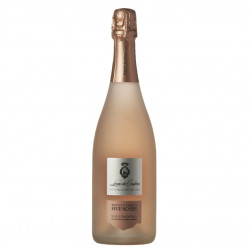
29.00 CHF
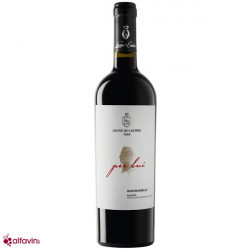
36.50 CHF
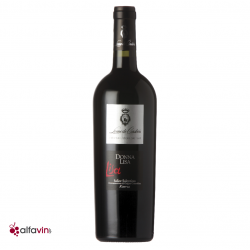
36.50 CHF
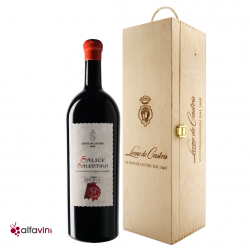
89.00 CHF
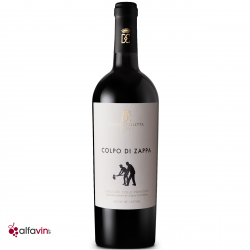
29.00 CHF
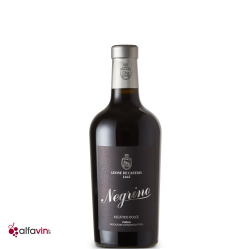
19.90 CHF












